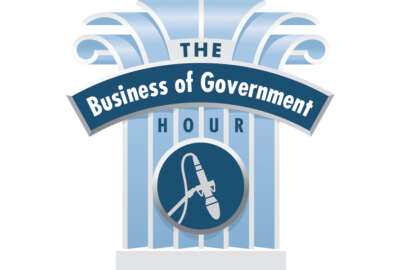DISA releases a new system to help military commanders see what was invisible
A new capability from the Defense Information Systems Agency (DISA) aims to give warfighters what it calls situational awareness of the electromagnetic spectrum.
A new capability from the Defense Information Systems Agency (DISA) aims to give warfighters what it calls situational awareness of the electromagnetic spectrum. The spectrum itself has become a battle-space, so it is important to know what’s going on there. For more on the baby-steps version of this tool, the Federal Drive with Tom Temin spoke with the Deputy Director of the Program Executive Office Spectrum, Kevin Laughlin.
Interview Transcript:
Tom Temin And let’s begin with some basic definitions here. Situational awareness in the electromagnetic spectrum. It sounds like you want to see the invisible here.
Kevin Laughlin That’s an interesting way to describe it. And yes, situational awareness is a key aspect of command and control. Understanding what’s going on around and the environment around you, whether that’s air, land, sea space, cyber domains. And of course, now the spectrum domain is becoming very critical to all things we do across all those warfighting domains. With EMBM joint situational awareness, one of the things that we’re doing for the Department for Warfighters is bringing together multiple disparate feeds of data, raw and other data sets. And what this will allow operators to do is make sense of this information where previously they would have had to have gone to a number of different sources, a number of different software capabilities. EMBM Joint situational awareness brings that data together into one location where they can visualize it and they can gain that situational awareness, that understanding of what’s happening in the spectrum. Therefore, very quickly put the information in front of the staff and decision makers so that they can make decisions more quickly than the enemy.
Tom Temin And what can happen in the spectrum. I mean, the spectrum is out there and information orders, imagery and so on are going back and forth over it with radios and so forth. So tell us more about what can happen in there that you would need to know about people trying to. Janet, for example.
Kevin Laughlin Yes, a number of things. Clearly, radio frequency waves carry data, all types of data and information back and forth, again, so that we can send and receive orders, transmit information out to the tactical edge, but also sense and make sense of the different signals and emissions that are happening in the radio frequency spectrum. So being able to bring in what we know about ourselves, what we are discovering, sensing about other emitters, both coalition enemy and even commercial, that all has a great impact on the congestion constraints in the spectrum and how we want to operate, how we want to maneuver. So the situational awareness capability brings that information together so we can make sense of it much more quickly and make decisions at the speed of relevance.
Tom Temin And can this help in two different ways one, knowing what the opponent or the enemy might be doing by putting up an antenna and seeing the nature and content perhaps of their emissions of waveforms? And can it also help plan the best pathway and the best frequency for our own forces to make sure that they can get the message through?
Kevin Laughlin Yes, absolutely. You hit on a couple of pieces. One, understanding what other emitters are out there, adversarial, or even other government, the host nation, etc., helps us better understand. And as you pointed out, at times when there’s congestion or interference from some of those signals, we can quickly identify and take steps to mitigate. And that might be moving our own use to another part of the spectrum, those are all decisions that take place within that operating headquarters. But clearly, you pointed out a couple of things. Having that awareness, that situational awareness of what’s happening in the electromagnetic spectrum environment and being able to very quickly make sense of that information and make decisions that help our fighting forces stay ahead of their adversaries.
Tom Temin And during a situation of battle or during a, say, a large scale exercise that the military would conduct with another nation, is there someone or a certain staff devoted to monitoring the spectrum during that operation?
Kevin Laughlin Yes, There’s actually a number of staff functions across the J code, the joint code staff elements. You have electronic signals collecting, you have maneuver and fires, and you have the planning and management of the cyber network actions. The department is actually evolving doctrinally to a concept referred to as EMSO. EMS Operations, where some of those functions are being consolidated, aligned under traditionally J3 and operations code, in what’s referred to as a JEMSOC, a Joint EMS Operations Cell, and they would be the primary users of the EMBM-J, the product line. Not all the department is aligned that way. So you still may have and you, you even outside of the JEMSOC, would have EMS operations folks wanting to use or able to use these capabilities.
Tom Temin We’re speaking with Kevin Laughlin. He’s deputy director of the program Executive Office Spectrum at the Defense Information Systems Agency. And what precisely have you produced here? Integrative type of software layer. Is this an application that someone would run on a PC? And what are some of the types of data that you had to integrate? Because I imagine with all of these different bandwidths and operations, it’s a varied kind of vegetable stew of data types you’d have to deal with.
Kevin Laughlin EMBM-J situational awareness and the overall program effort aligns with combined the joint all domain command control in terms of the framework and guiding principles, reference architectures to allow for interoperability. In this case, within EMBM-J, for example, it’s a cloud capability. The minimum viable capability release is a first iteration, if you will. In fact, the MVCR is defined as the initial set of features suitable to be fielded to an operational environment providing value to the warfighter or the end user in a rapid timeline. So the MVCR delivers initial warfighting capabilities to enhance some of the mission outcomes, sometimes referred to as minimum marketable product in the commercial industry.
Tom Temin Right. So you’re a step beyond beta at this point. This is something that’s deployable.
Kevin Laughlin This system went live on the 6th of December and it is in the hands of the department. There’s users today utilizing this minimum viable capability release. And what we intend to do is continue to build on the current capability. We have plans to bring in additional data feeds. Back to the first question you ask, the ability to auto correlation of events to enable the user to quickly see possible causes of electromagnetic interference, additional engineering services to support modeling and simulation of activities within the spectrum. We’re bringing in additional satellite data and modeling a number of different things, and additionally, working with some federal defense research centers looking to identify AI/ML use cases for implementation in the future iterations as well.
Tom Temin Yeah, I was going to say there’s got to be AI in here somewhere. There is everything else.
Kevin Laughlin Yes, that is the plan. And there’s some initial work in that area to identify opportunities to better understand, utilize that common data layer. That’s part of the electromagnetic battle management joint situational awareness capability. So as I said earlier, we align with the CJADC-2 guiding principles, and one of those is a minimum essential required metadata within the EMBM-J situational awareness comm and data layer that utilizes open rest APIs, implementation of identity credential and monitoring ICAM. We’re working with the CJADC-2 Working Group to map EMBM-J capabilities to multiple different mission function areas across the joint force. And as I said earlier, exploring implementation of AI/ML use cases, utilizing enterprise transport solutions for resiliency. And also a big thing that we like to talk about is the use of a software factory pipeline and agile development. This is critical because we are able to get enhancements, upgrades out to the users more quickly, But using these agile software development processes, we have regular routine engagement with the users and that’s really critical for a number of reasons. As the environment changes and as we learn lessons from real world events, we can very quickly use work with the requirements group to update the requirements, make sure that we are staying on top of what they need. But also we’re getting direct feedback into the development processes and the users are able to tell us whether we’re on the right track or not.
Tom Temin Right. Somebody in the field could say, Hey, you missed this particular thing we really need to know about. And you could find a way to inculcate that data into this tool.
Kevin Laughlin Absolutely. And we work very closely with the joint community, primarily led by U.S. Strategic Command, U.S. STRATCOM as the joint sponsor, their proponent for joint EMS operations. And they are a great teammate in bringing the joint community together and identifying the changes that the TTPs, the things that are happening in the world, bringing that back to the requirements, processes, ensuring that we’re on top of it, and then, like you said, making sure that the users are getting what they need.
Tom Temin And there’s this overarching effort going on the combined joint all domain command and control. JADC2 is a Pentagon wide effort, and then each of the armed services is developing their own C2, if you will, to inter operate under JADC2. This new tool you are deploying that will work with future JADC2 pieces?
Kevin Laughlin Yes, absolutely. CJADC-2 concept or construct is really best described as a framework, if you will. A reference design, a reference architecture that guides and maintains interoperability. So as you address command and control functions from the strategic to the joint operational levels of war and down to the component, the service level and tactical, by having a framework that’s understood and designs and standards to ensure interoperability things that I mentioned earlier, I can zero trust exchange standards, cloud, native development, microservices, all those things help as you pointed out, ensure interoperability and very rapid data exchange information exchanges so that we are able to allow our decision makers to make decisions very quickly ahead of their adversaries.
Copyright © 2025 Federal News Network. All rights reserved. This website is not intended for users located within the European Economic Area.
Tom Temin is host of the Federal Drive and has been providing insight on federal technology and management issues for more than 30 years.
Follow @tteminWFED







